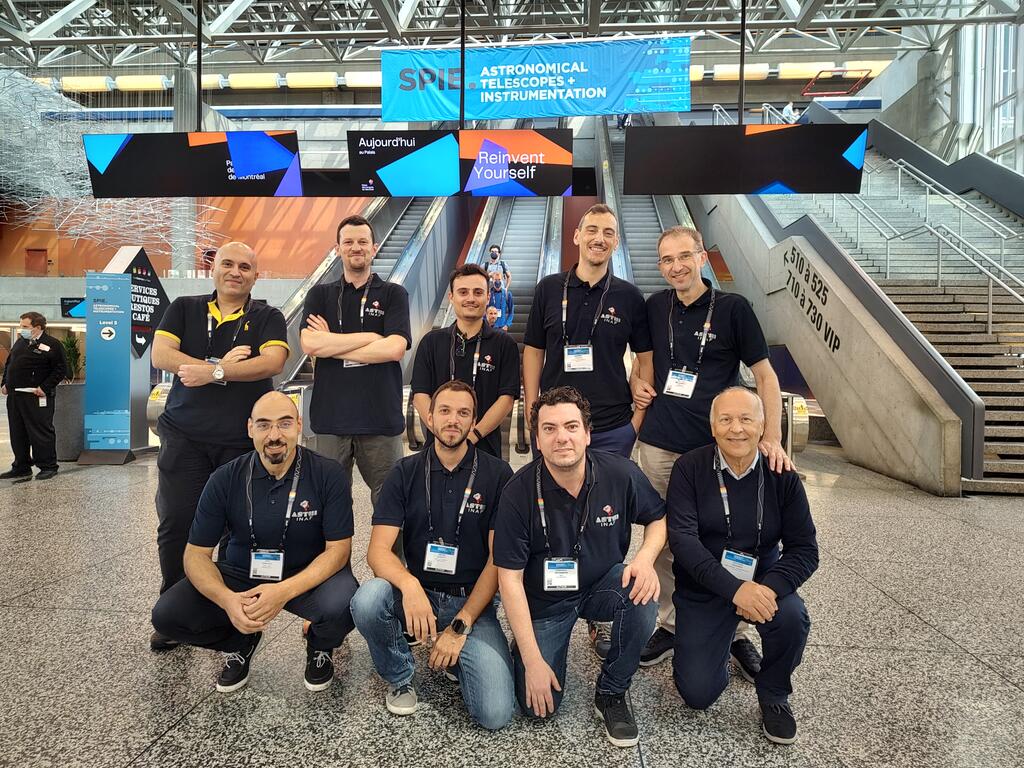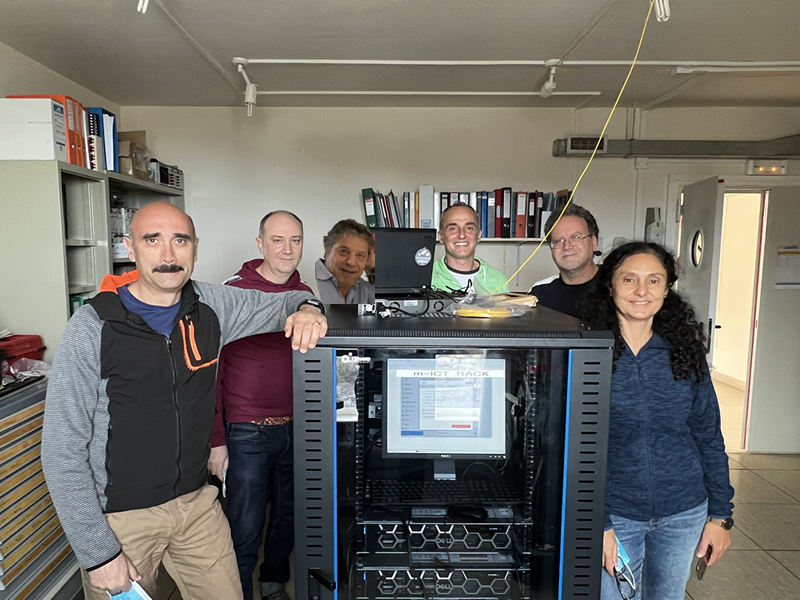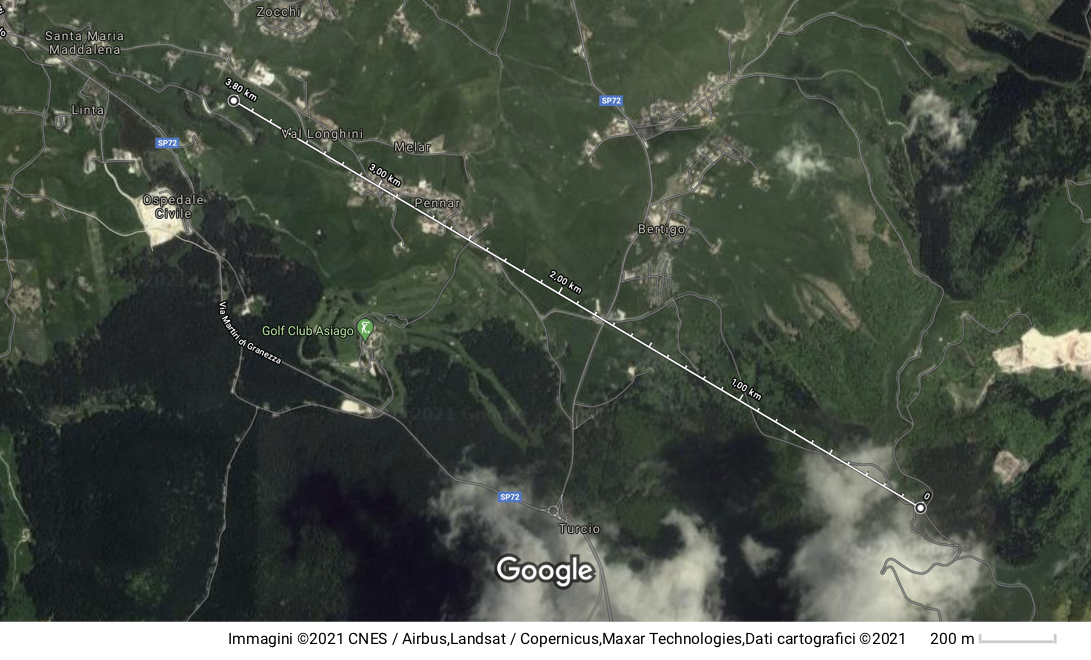The Principal Investigator of the ASTRI project discusses goals, achievements, and future perspectives in an interview published by Media INAF.
The ASTRI Mini-Array will consist of 9 telescopes. The first became operational in 2024, and 7 have already been installed on the Teide plateau in the Canary Islands. The site continues to affirm its status as one of the leading international observatories.
The ASTRI Collaboration is attending the 39th International Cosmic Ray Conference (ICRC 2025) in Geneva, Switzerland. The ASTRI scientists are presenting 4 contributed talks and 14 posters covering the status of the project, its science, data processing and simulation, calibrations and AIV procedures.

UTFSM room with guests. Massimo Turatto is the last to the right of the table
On October 25th, 2022, in Valparaiso (Chile), the kick-off meeting of the new agreement between INAF and the Federico Santa Maria Technical University (UTSFM) has taken place. The agreement is related to the production of the ASTRI Mini-Array control software. Massimo Turatto, INAF researcher and now Italian scientific attaché in Chile, and various Chilean colleagues including Juan Yuz, Rector of the University were present. Other colleagues, including ASTRI Principal Investigator, Giovanni Pareschi, and ASTRI Project Manager Salvatore Scuderi, were connected remotely.
The agreement expands the international partnership of the ASTRI project, which is now in the executive phase, with the first telescope mounted in Tenerife and two others to be delivered in the coming months. Furthermore, the other six telescopes and the detection chambers are now in production. This is therefore the time to prepare the control system of the various telescopes, at the center of which is the control software. Particular standards, based on the Alma Common Software (ACS) IT infrastructure, developed precisely for the management of arrays of telescopes such as in ALMA, have to be followed.
As pointed out by Mauricio Araya, of the Astroinformatics section at the UTFSM and Director of the project for the control software of ASTRI, the Chilean group has a solid specific know-how in the field of control systems for astronomical projects in the ACS environment. In this field, UTFSM has twenty years of experience in Chile, with a legacy of successes including involvement in international projects, such as those led by ESO (European Southern Observatory), or by AUI (Associated Universities, Inc., USA, who manages the American share of ALMA). “The ASTRI project”, adds Araya, “is not in Chile, and therefore if we have been called to this task it is not because we are nearby, but because we know the system that ASTRI will have to use”.
“Working with ASTRI will open a new window because there is a need and the will to do it. But this is only the beginning of a new collaboration between our countries that we hope will last”, says Turatto.

The goals of the ASTRI control software
Image above: The ASTRI team at the SPIE Astronomical telescopes + instrumentation meeting in Montreal, July 2022. Credit: ASTRI
The conference “SPIE Astronomical Telescopes + Instrumentation” is one of the most important in the world in the field of astronomical technologies and instrumentation. Hundreds of scientists from different countries meet and share their progress, their ideas… and stay in touch by creating a scientific network of researchers and professionals. A large group of researchers from the ASTRI project presented the progress achieved in different scientific-technological fields at the Montreal symposium with numerous presentations and posters. Here is the ASTRI TEAM at SPIE 2022!
Caption: Salvatore Scuderi, Alessandro Tacchini, Giuseppe Malaspina, Marcello Lodi, Fulvio Gianotti, Christine Grivel with the monolith m-ICT connected to the world. (Credits: Giuseppe Malaspina)
May 2022 –
In fact, every observing facility needs IT support both for operating the instruments on site and to handle the remote connections. This result was also achieved with the precious collaboration of local firms.
The joint effort made it possible to move from the initial paper sketches to a well-coded project and, finally, to this small, somewhat noisy monolith that is the m-ICT.
The m-ICT consists of various parts: the control system of the telescopes, the data acquisition system, which also allows the temporary storage of the acquired data, the monitoring of both the acquisition process and the status of the telescopes, the network that connects the telescopes to the site but also the connection with the outside world via Internet, and finally the temporal characterization system of the data which must assign a label to each datum with the precise indication of the instant of acquisition.
As Fulvio Gianotti, ICT manager for ASTRI on-site recalls: “m-ICT represents a temporary system in a reduced version, suitable for supporting the first phases of the program and in particular the installation of the first 3 telescopes before the final ICT is ready.” The m-ICT was installed in the premises of the CNRS Themis Solar Observatory, also intended to house the control room of ASTRI.
For technical experts, the system operation diagram is described in this figure:
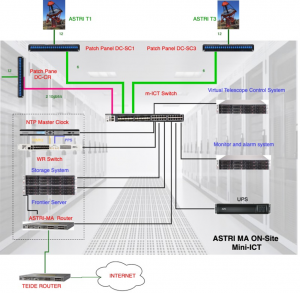
Lo schema dei collegamenti del m-ICT
Con la collaborazione di Fulvio Gianotti
ASTRI is an INAF gamma-ray experiment with the collaboration of other international institutions (P.I. G. Pareschi) with the aim of observing the gamma ray sky from a few to hundreds of TeV by building a Mini-Array of 9 telescopes in Tenerife (Canarie, Spain – thanks to the Instituto de Astrofisica de Canaria, IAC hospitality). The Mini-Array telescopes are similar to those that will be constructed for the CTA project in the south.
Social: Facebook ASTRIgamma; Instagram @astrigamma
On 25th November 2021, the new camera was installed on the ASTRI-Horn prototype telescope at the Serra la Nave Observatory. The deep refurbishment of the instrument and the new aluminization of the mirror put the telescope back into focus. It will be used also to test the new ASTRI Mini-Array cameras and, possibily, also those of CTA, in the future.
Meet a few of the leading figures: Giuseppe Sottile, Osvaldo Catalano and Giuseppe Leto, interviewed by Giuseppe Fiasconaro with the collaboration of MediaINAF, describe each their point of view:
A new observational technique to identify the finest details of celestial sources: after long nights of experiments, stellar intensity interferometry has given its first results.
With a base between the two telescopes on the Asiago plateau of almost 4 kilometers, Luca Zampieri and collaborators target the brightest stars with instruments capable of counting single optical photons and of tagging their arrival time with the precision of the order of a few hundred picoseconds (one ten-billionth of a second).
If applied to ASTRI Mini-Array, this technique could give even more spectacular results.
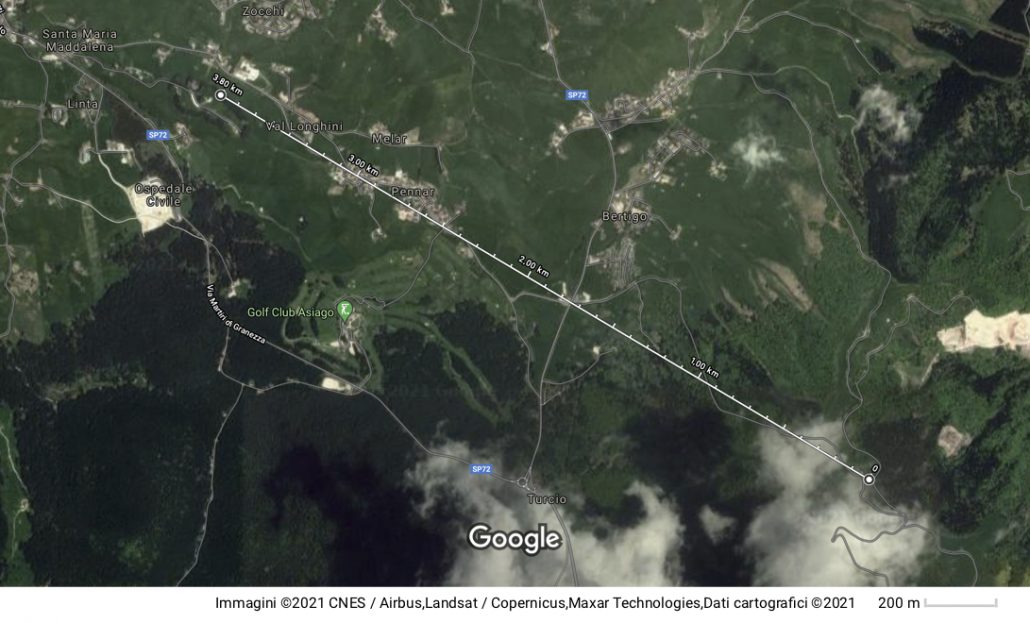
Asiago upland: the telescopes used in the experiment
Read the details both in the article published by the Monthly Notices of the Royal Astronomical Society: “Stellar intensity interferometry of Vega in photon counting mode”, by Luca Zampieri, Giampiero Naletto, Aleksandr Burtovoi, Michele Fiori and Cesare Barbieri and in the in-depth study published by MediaINAF.
Link importanti
Latest news
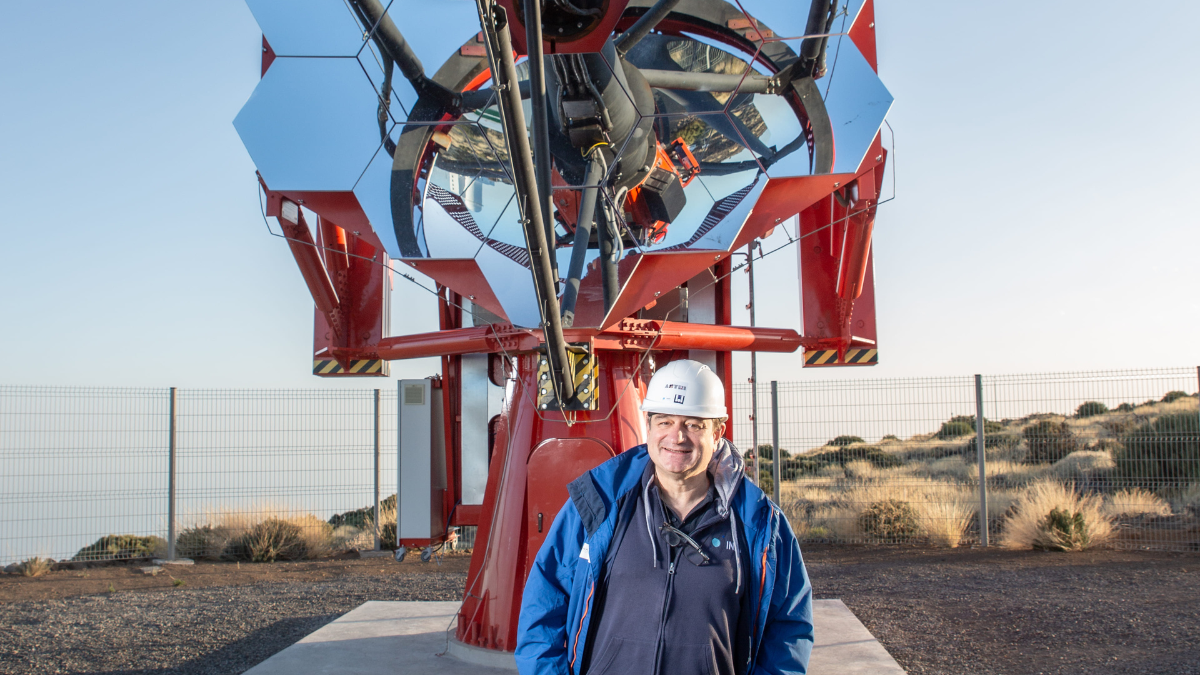 An interview with the ASTRI Principal Investigator, published by Media INAFAugust 6, 2025 - 10:07 am
An interview with the ASTRI Principal Investigator, published by Media INAFAugust 6, 2025 - 10:07 am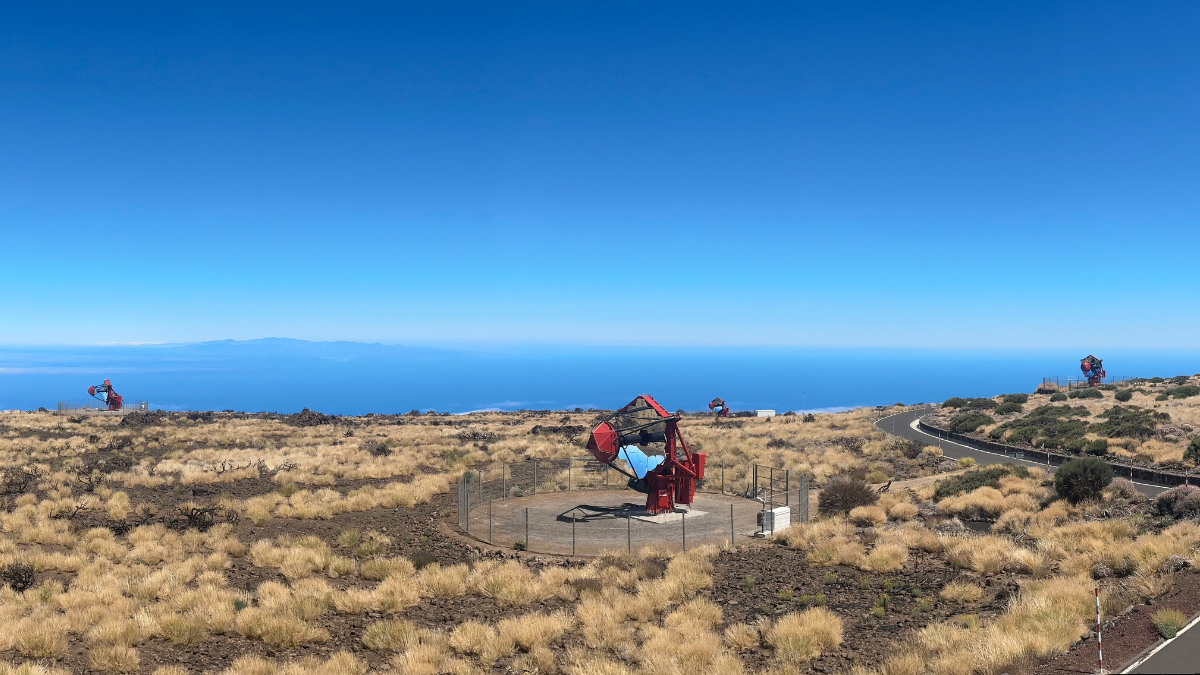 Credits: INAF/Giuseppe LetoASTRI Mini-Array: 7 telescopes on the Teide plateauJuly 30, 2025 - 9:20 am
Credits: INAF/Giuseppe LetoASTRI Mini-Array: 7 telescopes on the Teide plateauJuly 30, 2025 - 9:20 am The science of ASTRI at the ICRC in GenevaJuly 23, 2025 - 10:46 am
The science of ASTRI at the ICRC in GenevaJuly 23, 2025 - 10:46 am
ASTRI-HORN IL PROTOTIPO
Sito osservativo INAF:
OACT, a Serra La Nave (Etna – Sicilia).
ASTRI Project office
INAF Osservatorio Astronomico di Brera,
via E. Bianchi 46, 23807 Merate (LC)



